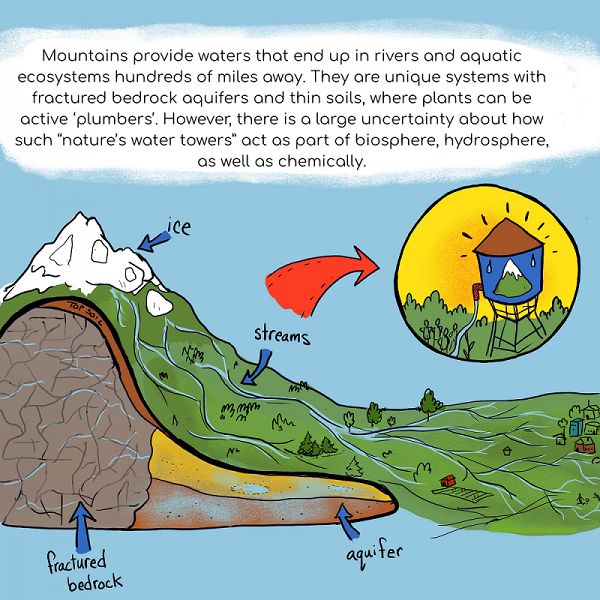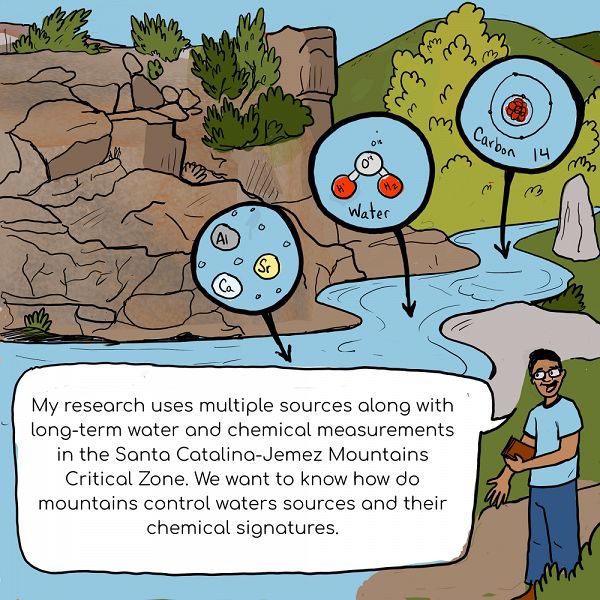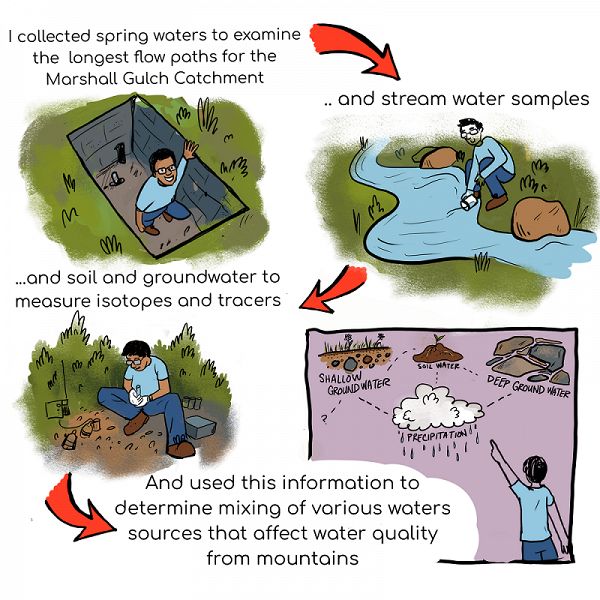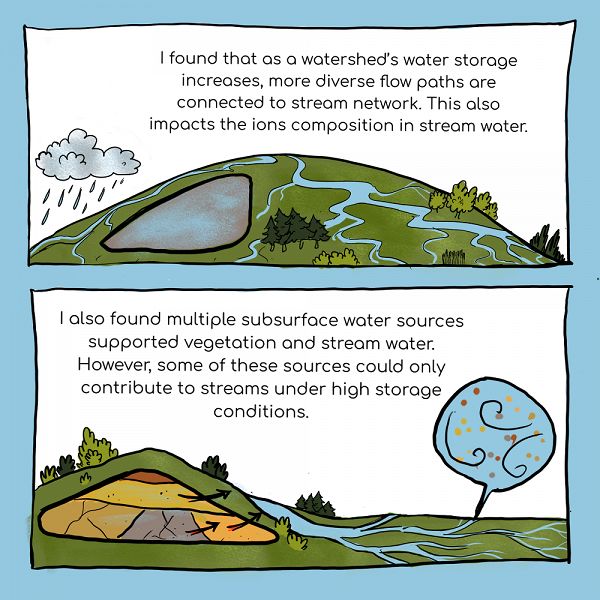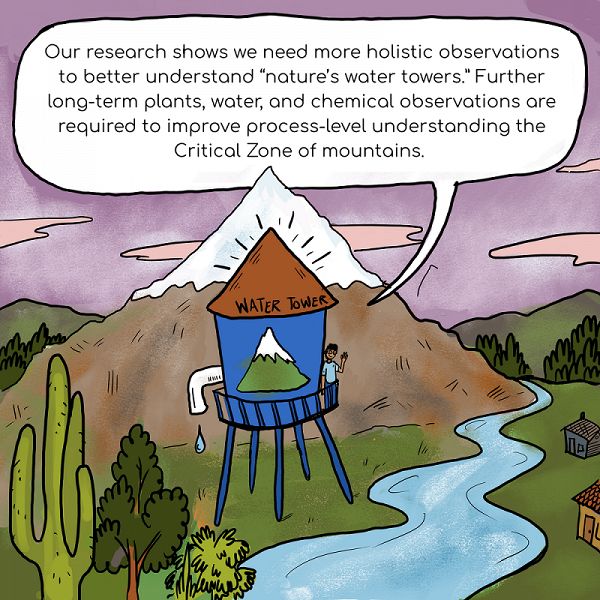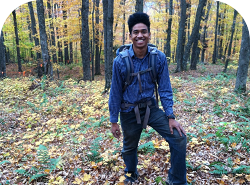Tracking water movement from mountains in the Critical Zone
Ravindra Dwivedi in Adventures in the Critical Zone

Jul 14, 2019
An illustrated introduction to Dr. Ravindra Dwivedi's research on tracking water movement from mountains in the Critical Zone.
By Drs. Ravindra Dwivedi (The University of Arizona, Tucson) and Justin Richardson (UMass Amherst)
Illustrated by Alana McGillis
Panel 1. We are introduced to Dr. Ravindra Dwivedi in a dry, mountainous region of Arizona. Ravindra studies water resources of the Critical Zone.
Panel 2. Mountains provide water to rivers, that flow hundreds of miles away from their main peaks. The water can flow on the surface as a river, or below within soils and bedrock as part of an aquifer.
Panel 3. Ravindra explains that he uses multiple chemical measurements to learn how mountains in the dry desert can influence water movement.
Panel 4. Ravindra collects spring and ground waters from soil pits and flowing water samples from streams. Using isotopes and chemical tracers, Ravindra can explain the mixing of waters from multiple sources on a mountain.
Panel 5. His research shows that water storage increases with more diverse flow paths and trees are able to access multiple sources, depending on the storage conditions.
Panel 6. The project Ravindra completed was part of a big team effort to understand “nature’s water towers” as a whole system.
Guest Author

Ravindra Dwivedi
CZO GRAD STUDENT. . Specialty: Hydrology, Flow and transport in hydrological systems, Geochemistry
COMMENT ON "Adventures in the Critical Zone"
All comments are moderated. If you want to comment without logging in, select either the "Start/Join the discussion" box or a "Reply" link, then "Name", and finally, "I'd rather post as a guest" checkbox.
ABOUT THIS BLOG
Justin Richardson and his guests answer questions about the Critical Zone, synthesize CZ research, and meet folks working at the CZ observatories
General Disclaimer: Any opinions, findings, conclusions or recommendations presented in the above blog post are only those of the blog author and do not necessarily reflect the views of the U.S. CZO National Program or the National Science Foundation. For official information about NSF, visit www.nsf.gov.
Explore Further

